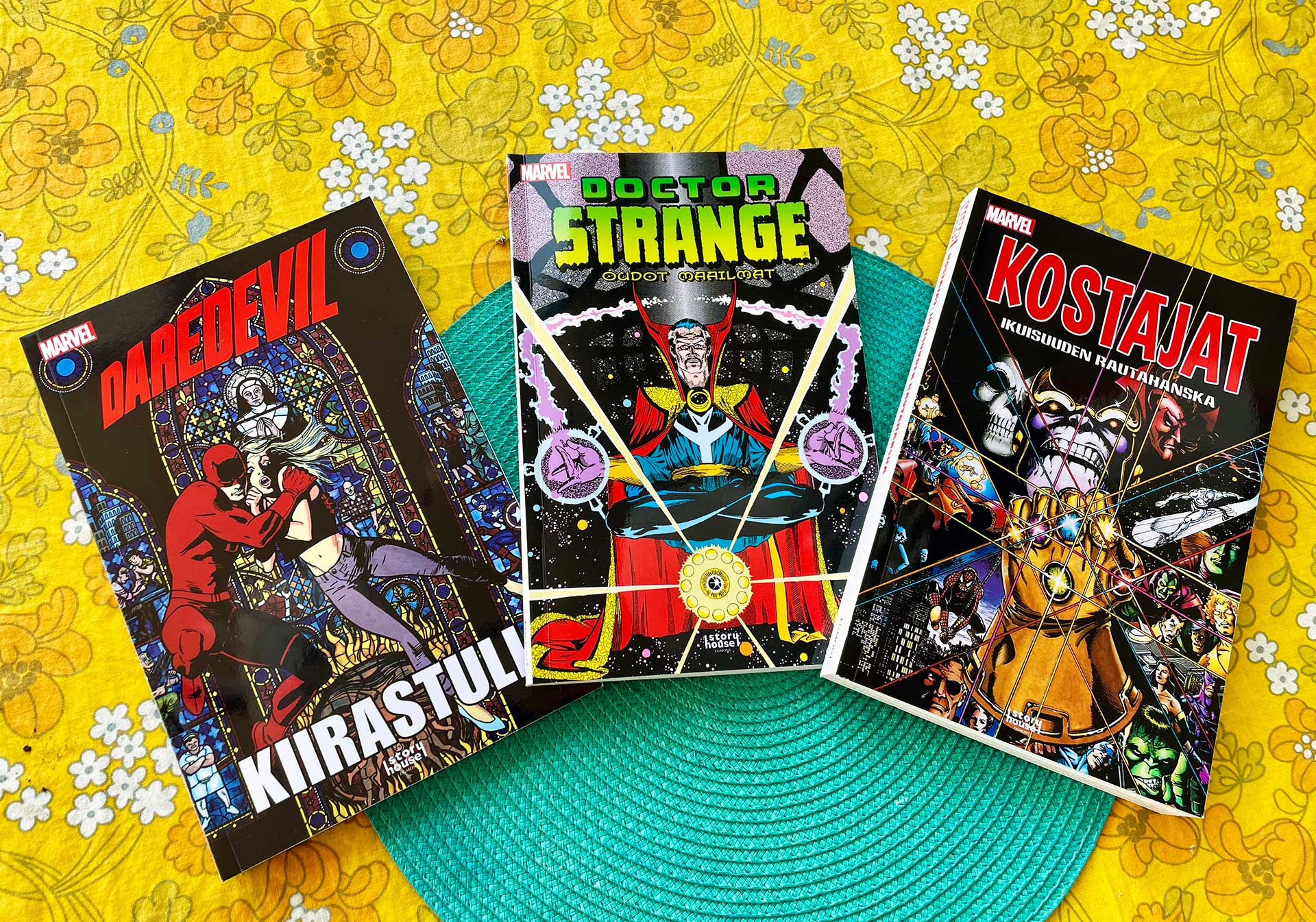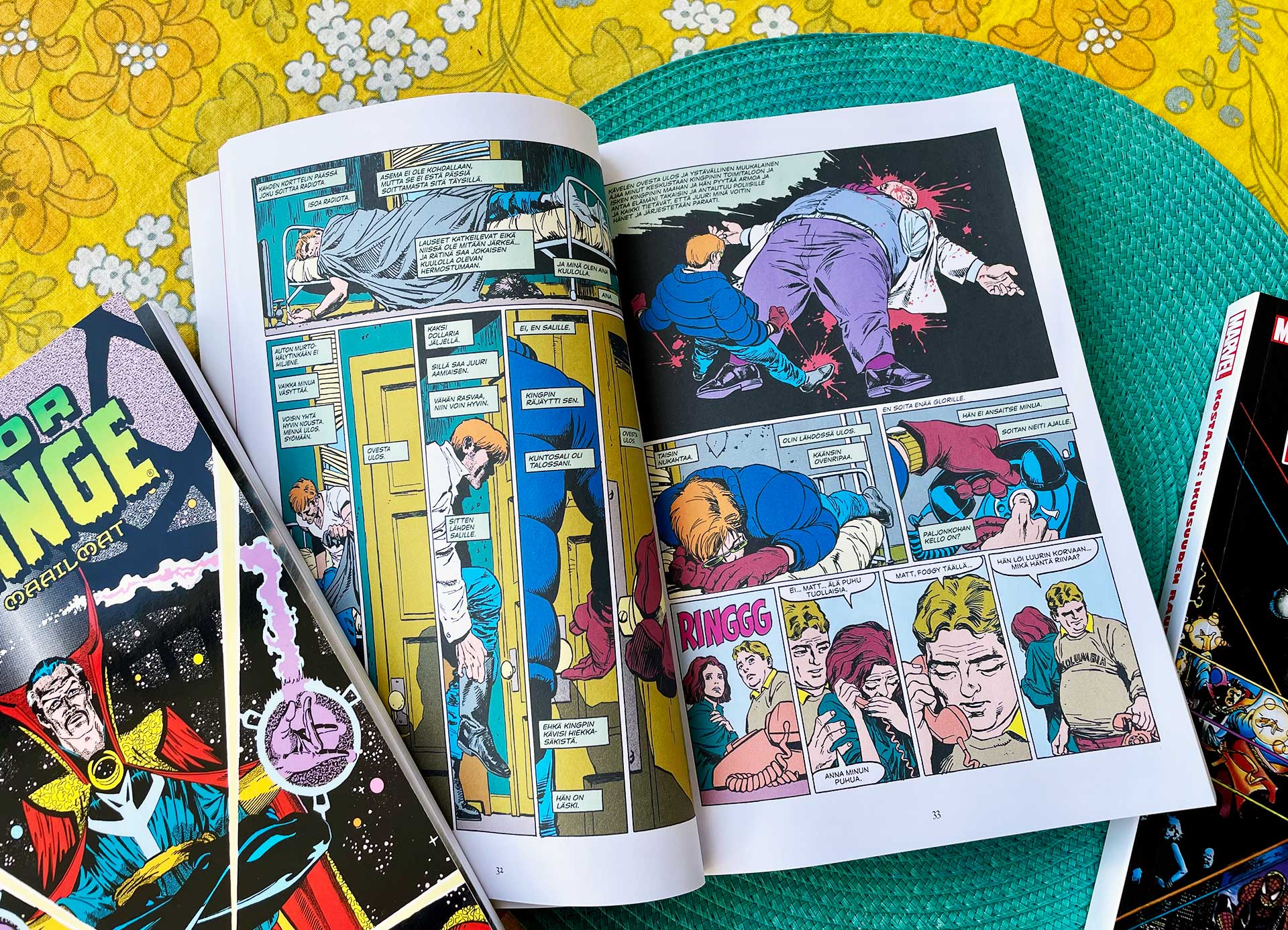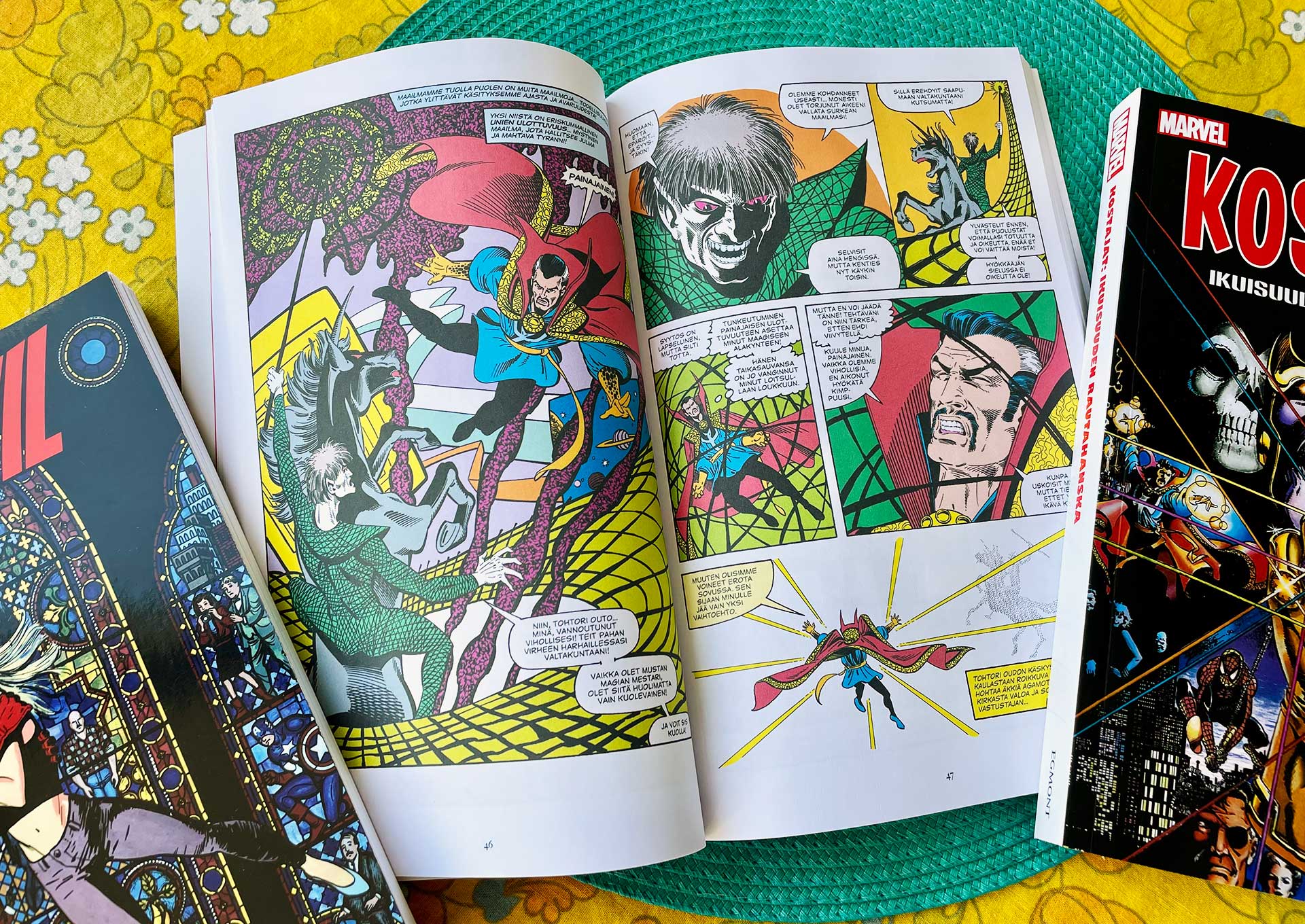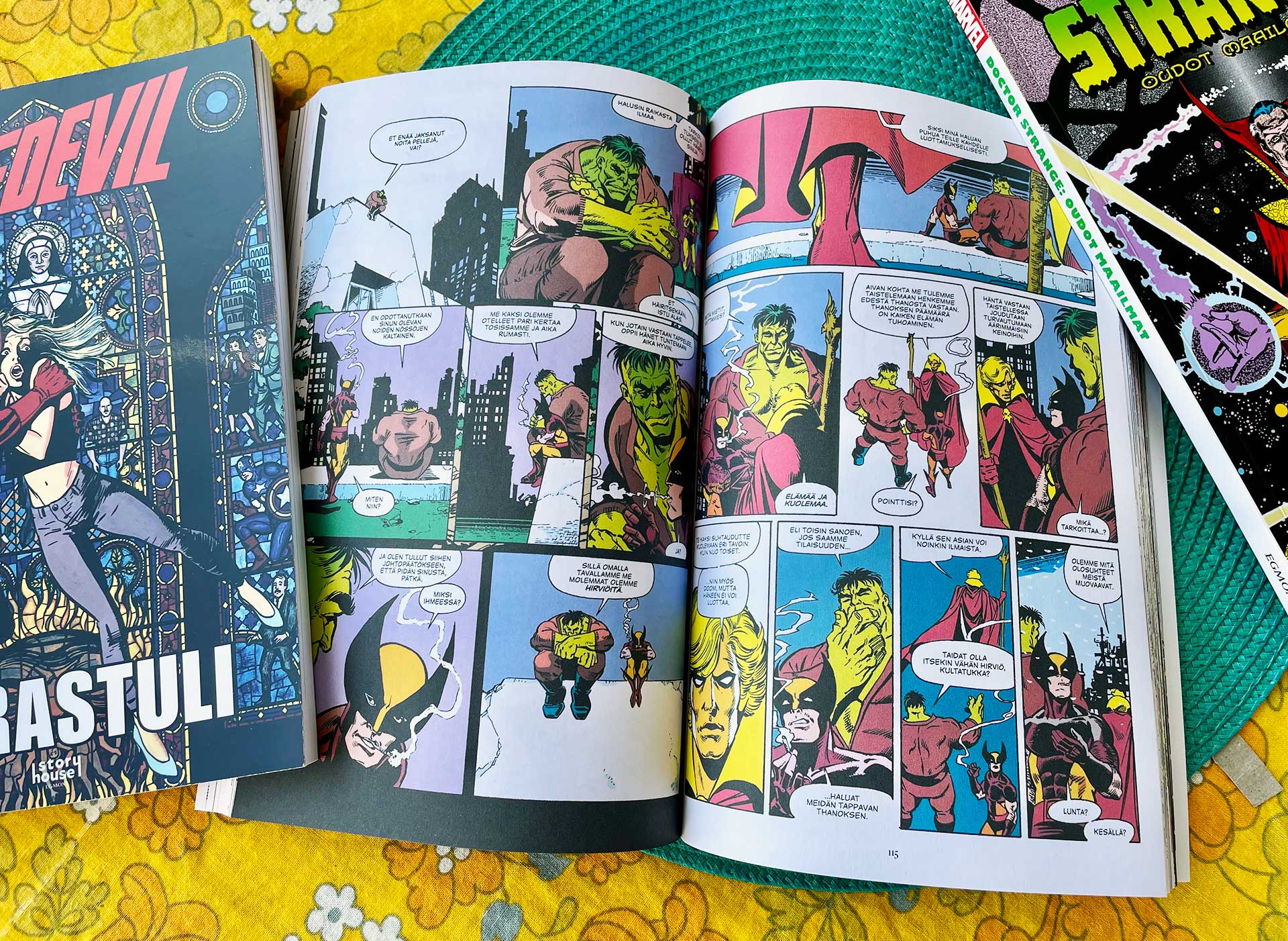
In Egmont’s new Marvel collections, there are adventures in 1980s New York, on the astral plane and in the ravages of space.
Story House Egmont has continued its series of Marvel collections focusing on stories from past decades with three new releases this year. It arrived in stores in the spring Daredevil: Kiirastuliin summer Doctor Strange: Strange Worlds and it was early autumn Avengers: Iron Gauntlet of Eternity turn.
In addition to nostalgic collections, Egmont also continues to publish Spider-Man’s own Spider-Man comic magazine, which has been arriving at newsstands every month without interruption since 1980.
The comedians podcast According to Story House Egmont will continue publishing Marvel collections next year at least by Frank Miller with a production-focused Daredevil collection as well as John Byrnen With the miracle quads. For a long time, there will also be stories focusing on DC Comics heroes, about which there will probably be more official information at the end of the year. But what’s the point in worrying about what’s to come, when this year’s releases are still to be released…
Daredevil: Kiirastuli
Paperback | 167 pages | 24.95 euros
The Daredevil classic Purgatory, originally published in the 2/1988 and 4/1988 issues of MARVEL magazine (Born Again) has finally been collected in one cover.
Frank Miller returned in 1986 as the writer of Daredevil after half a year’s hiatus, but this time left the illustrations David Mazzuccelli responsibility. And it’s great that he left, because Mazzucchelli’s drawings fit the down-to-earth story of Purgatory clearly better than Miller’s own more reduced stylization.
The Mail-Man eli Lauri Narinen Purgatory in Finnish still works admirably and is at its best at the beginning of the story, when Miller depicts the plunge of Matt Murdock, who has lost everything, towards the depths of madness, as his archenemy Kingpin destroys the blind lawyer’s life totally one area at a time. Towards the end, accurate personal description makes way for Nuke’s rampage, the Avengers’ cameo and other activities, which eats into the story’s power, but nevertheless becomes an essential part of the catharsis experienced by Murdock.
The purgatory collection presents the classic story a little more narrowly than how it was seen in MARVEL in 1988: Daredevil magazine issue 226, which preceded the collapse of Matt Murdock, is not found in the collection, and is quite detached in collaboration By Dennis O’Neil the share made with was already once upon a time.
In Kiirastule, the bonus materials remain on one author introduction page.


Doctor Strange: Strange Worlds
Paperback | 132 pages | 20.95 euros
Roger Sternin scripted by, and Marshall Rogersin and Terry Austinin illustrated by Doctor Strange: Strange Worlds is the only one of Egmont’s Marvel collections this year that contains previously untranslated material. However, we cannot talk about a new story, because Jouko Ruokosenmäki the work translated into Finnish covers issues 48-53 of the Doctor Strange magazine, which appeared in the USA already in 1981-1982.
In addition to the illustration style, it is easy to notice the age of the comic from the narrative solutions, such as the text boxes and thought bubbles used without irony, and the pompous monologues of the villains. Of course, age doesn’t water down a good comic, but Strange Worlds represents the basic Marvel of its time without providing reasons for its greater jubilation.
The illustration is successful in itself, but the masses of text make reading difficult in places. And there’s not much meat in the stories either, if the extra spice brought by the occult is stripped from them. Although there is a good coverage of Oudo’s adventures with their classic enemies, it was unclear to me why exactly this story has been decided to be published in Finnish. There would have been endless options.
The ingredients of a true classic could hardly be found in Strange Worlds even by the eye of Agamotto.
The best thing in the collection is of course Doctor Strange himself, who with his mustache and capes is still one of Marvel’s best characters. It’s hard not to enjoy a hero who says to his face in basic reading the following: “Get up little one. I’m no god. I am just a man who has learned to control certain forces. Those forces flow in all of us.”
At the end of the Doctor Strange: Strange Worlds collection, in addition to the cover photo gallery of the original magazines, there are introductions by the authors.


Avengers: Iron Gauntlet of Eternity
Paperback | 248 pages | 29.95 euros
Like Daredevil, Avengers: The Iron Glove of Eternity also recycles materials from MARVEL magazine. Clearly the thickest Marvel collection of the year hits the single covers of MARVEL issues 5/1993 and 7/1993 with Mail-Man’s original Finnish translation.
Again, there is exactly one page of background material, and it focuses on introducing the authors. It’s a pity in itself, because I would have liked to have dived deeper into the creation of a story that is one of Marvel’s greatest classics.
As a story, the Iron Glove of Eternity still works well. Scriptwriter Jim Starlin gets draftsmen George Perezin and Ron Limin built with a great end-of-the-world scenario, which is largely based on sleuthing, but offers enough drama and sharp dialogue to keep the reader interested until (almost) the end.
After reading it for a long time, the Iron Glove of Eternity also reminds me how different the source material is compared to the film adaptations (Avengers: Infinity War2018 & Avengers: Endgame2019). Of course, there are more characters than on the big screen, and the action is more spectacular in every way. However, the real strengths of the comic are the small moments that depict the pain points between the heroes and how Thanos’ actions reflect on humanity. Jim Starlin is especially good at handling, for example, the Hulk, whose talk with Wolverine on the roof of the Avengers headquarters is one of the highlights of Iron Gauntlet of Eternity. Such backwater moments The Russo Brothers got too little for their big movies.
The comic book version is also worthy of praise for the better written Thanos: the idea of halving the number of living beings in the universe is a pretty stupid thing to do, and not a sensible solution to the problems of overpopulation. Far more believable (well, sort of) is the idea of a lovesick madman slaughtering billions of living creatures in a desperate bid to impress his crush, who in this case happens to be the personification of death.
First published in 1990 in the USA, the Iron Glove of Eternity has truly earned its place among the Marvel classics, and the collection from Egmont is a cultural achievement.


The prices of the collections come from Egmont’s online store. Prices may vary depending on the store.
Source: muropaketti.com


